new posts in all blogs
Viewing: Blog Posts Tagged with: 2016 nonfiction picture books, Most Recent at Top [Help]
Results 1 - 5 of 5
How to use this Page
You are viewing the most recent posts tagged with the words: 2016 nonfiction picture books in the JacketFlap blog reader. What is a tag? Think of a tag as a keyword or category label. Tags can both help you find posts on JacketFlap.com as well as provide an easy way for you to "remember" and classify posts for later recall. Try adding a tag yourself by clicking "Add a tag" below a post's header. Scroll down through the list of Recent Posts in the left column and click on a post title that sounds interesting. You can view all posts from a specific blog by clicking the Blog name in the right column, or you can click a 'More Posts from this Blog' link in any individual post.
It’s finally come! The list is nearing its end. So it is with great delight that I present to you some of the last of the lists. Today’s is particularly long, celebrating what I consider to be some of the best books of 2016. Since so many of them have shown up on my other lists I’ll leave off the comments this time around except for those that haven’t appeared here before.
These are the nonfiction titles I was most impressed by in 2016:
2016 Nonfiction Picture Books
Ada Lovelace, Poet of Science: The First Computer Programmer by Diane Stanley, ill. Jessie Hartland

Ada’s Ideas: The Story of Ada Lovelace, the World’s First Computer Programmer by Fiona Robinson
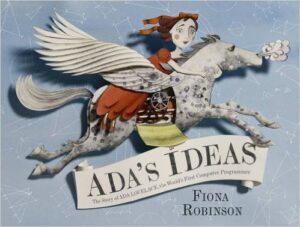
Ada’s Violin: The Story of the Recycled Orchestra of Paraguay by Susan Hood, ill. Sally Wern Comport

Animals by the Numbers: A Book of Infographics by Steve Jenkins

Anything But Ordinary: The True Story of Adelaide Herman, Queen of Magic by Mara Rockliff, ill. Iacopo Bruno

A Beetle Is Shy by Dianna Hutts Aston, ill. Sylvia Long
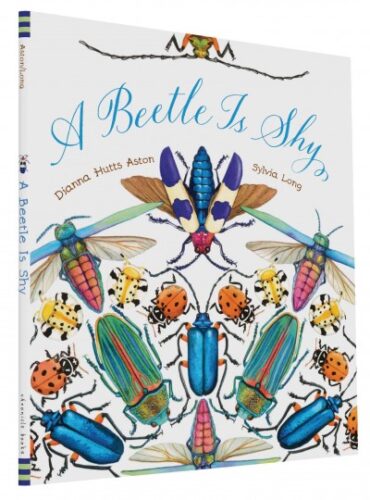
Circle by Jeanne Baker

Cloth Lullaby: The Woven Life of Louise Bourgeois by Amy Novesky, ill. Isabelle Arsenault

The Deadliest Creature in the World by Brena Z. Guiberson, ill. Gennady Spirin
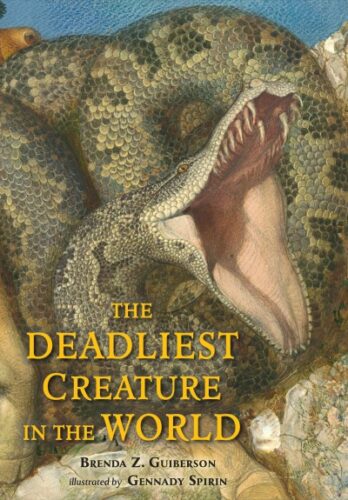
Death Is Stupid by Anastasia Higginbotham

Dining With Dinosaurs: A Tasty Guide to Mesozoic Munching by Hannah Bonner
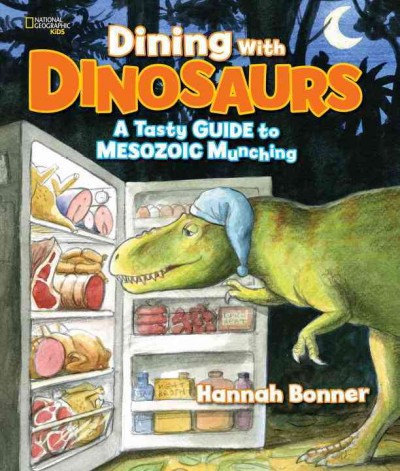
Does a Fiddler Crab Fiddle? by Corinne Demas & Artemis Roehrig, ill. John Sandford
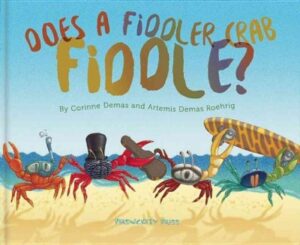
Dorothea’s Eyes by Barb Rosenstock, ill. Gerard DuBois
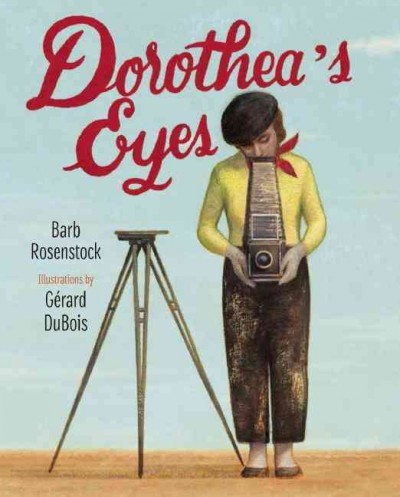
Elizabeth Started All the Trouble by Doreen Rappaport, ill. Matt Faulkner

Fancy Party Gowns: The Story of Ann Cole Lowe by Deborah Blumenthal, ill. Laura Freeman
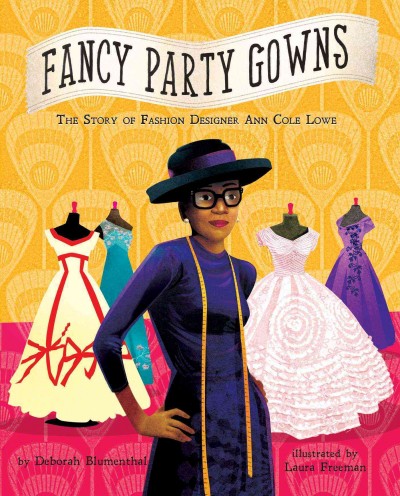
Gabe: A Story of Me, My Dog, and the 1970s by Shelley Gill, ill. Marc Scheff
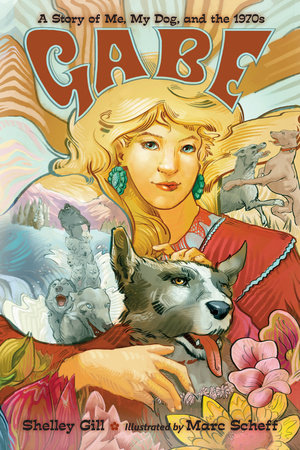
Grandmother Fish: A Child’s First Book of Evolution by Jonathan Tweet, ill. Karen Lewis

Growing Peace: A Story of Farming, Music, and Religious Harmony by Richard Sobol

If this hasn’t appeared on a list before it’s only because I’ve never found a place to slot it. Though it has elements of biography to it, it’s mostly about sustainable farming, overcoming religious differences, and working together. And since I never made a peace and global studies list (next year?) it shall go here instead.
How Cities Work by James Gulliver Hancock

Very keen. It’s a good book to use if you want to describe to a kid how cities form, what they contain, their problems, their solutions, and their future. Lots of lift-the-flap elements as well.
One note – if you’re buying this book for your system through Baker & Taylor, they’ll have a warning note attached saying that there are small parts and that it’s not appropriate for children under the age of three. They sometimes will put this warning on books with small lift-the-flap flaps. I personally think the book is safe, but you may be strict in your policies. FYI.
How Much Does a Ladybug Weigh? by Alison Limentani
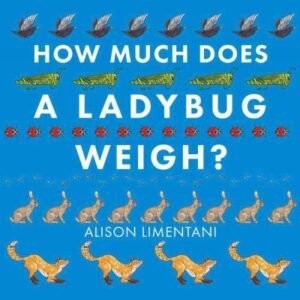
I Am NOT a Dinosaur! by Will Lach, ill. Jonny Lambert

I Dissent: Ruth Bader Ginsburg Makes Her Mark by Debbie Levy, ill. Elizabeth Baddeley

The Kid from Diamond Street: The Extraordinary Story of Baseball Legend Edith Houghton by Audrey Vernick, ill. Steven Salerno
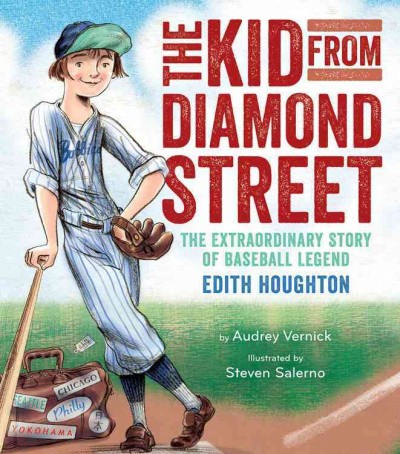
Lift Your Light a Little Higher: The Story of Stephen Bishop: Slave-Explorer by Heather Henson, ill. Bryan Collier
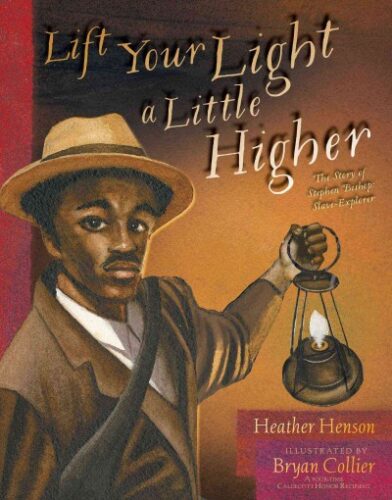
Martin Luther “Here I Stand” by Geraldine Elschner, translated by Kathryn Bishop
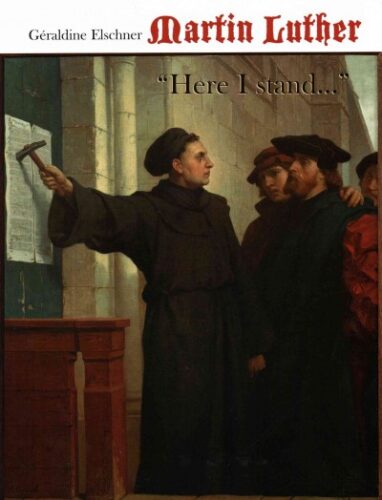
The Marvelous Thing That Came from a Spring: The Accidental Invention of the Toy That Swept the Nation by Gilbert Ford
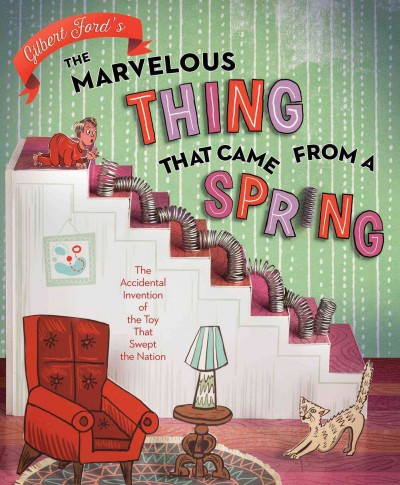
Since the book is focused far more on the invention than the inventor, I couldn’t really put it on the biographical list. So for all that it’s fun and funny and interesting and beautiful (really beautiful) I’ve had to wait until now to put it on any lists. That said, it was worth the wait.
Miracle Man: The Story of Jesus by John Hendrix
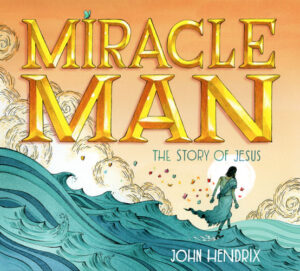
The Music in George’s Head: George Gershwin Creates Rhapsody in Blue by Suzanne Slade, ill. Stacy Innerst
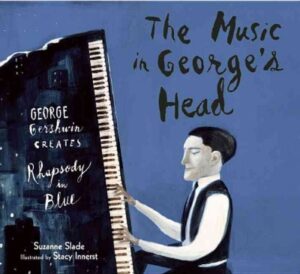
My Book of Birds by Geraldo Valerio
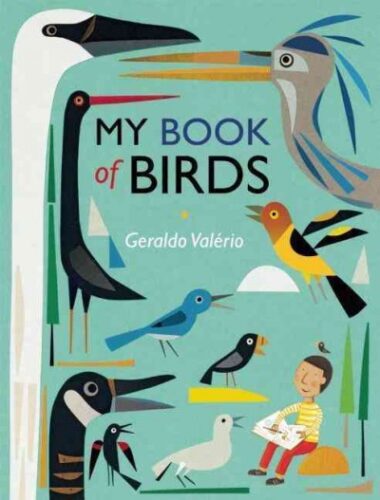
Natumi Takes the Lead: The True Story of an Orphan Elephant Who Finds Family by Gerry Ellis with Amy Novesky
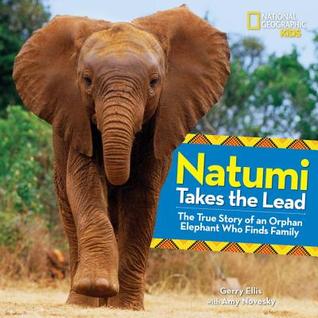
The Navajo Code Talkers by J. Patrick Lewis, ill. Gary Kelley

Olinguito, from A to Z! / Olinguito, de la A a la Z! by Lulu Delacre

Otters Love to Play by Jonathan London, ill. Meilo So

Pink Is for Blobfish: Discovering the World’s Perfectly Pink Animals by Jess Keating, ill. David DeGrand
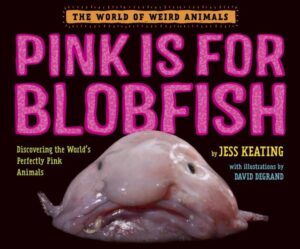
A Poem for Peter: The Story of Ezra Jack Keats and the Creation of The Snowy Day by Andrea Davis Pinkney, ill. Lou Fancher & Steve Johnson
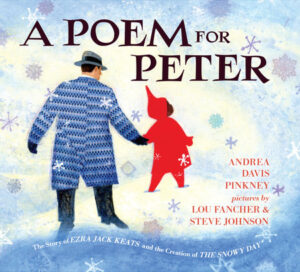
The Polar Bear by Jenni Desmond

Prairie Dog Song by Susan L. Roth and Cindy Trumbore

Radiant Child: The Story of Young Artist Jean-Michel Basquiat by Javaka Steptoe
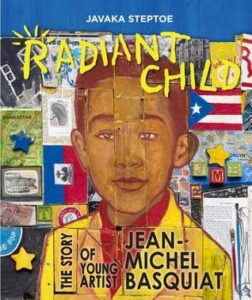
The Secret Subway by Shana Corey, ill. Red Nose Studio
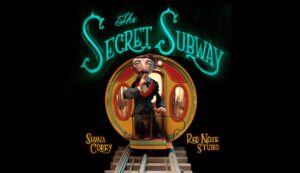
She Stood for Freedom: The Untold Story of a Civil Rights Hero, Joan Trumpauer Mulholland by Loki Mulholland & Angela Fairwell, ill. Charlotta Janssen
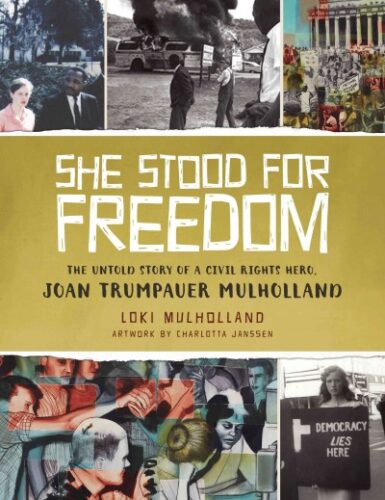
A Spy Called James: The True Story of James Lafayette, Revolutionary War Double Agent by Anne Rockwell, ill. Floyd Cooper
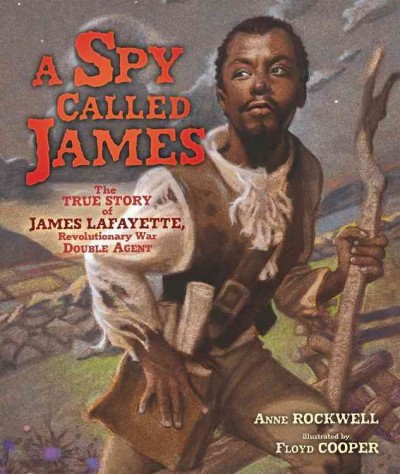
Step Right Up: How Doc and Jim Key Taught the World About Kindness by Donna Janell Bowman, ill. Daniel Minter
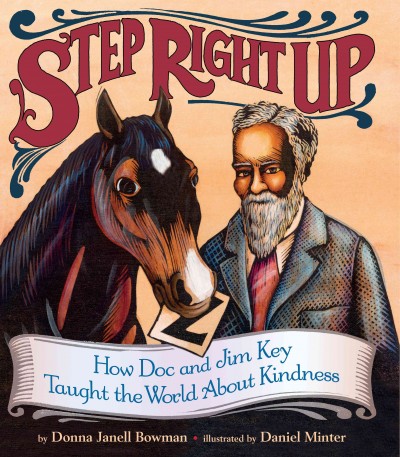
Ticktock Banneker’s Clock by Shana Keller, ill. David C. Gardner

The Toad by Elise Gravel
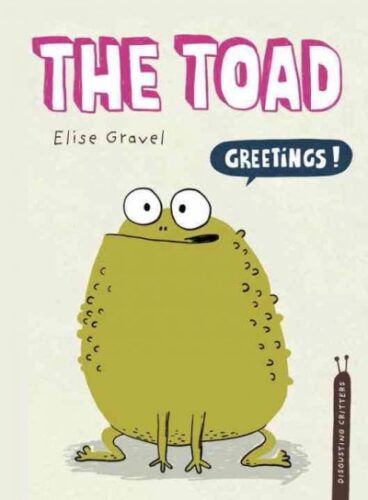
The Tudors: Kings, Queens, Scribes, and Ferrets! by Marcia Williams

Under Earth / Under Water by Aleksandra Mizielinska and Daniel Mizielinski

When Grandma Gatewood Took a Hike by Michelle Houts, ill. Erica Magnus

Whoosh! Lonnie Johnson’s Super-Soaking Stream of Inventions by Chris Barton, ill. Don Tate
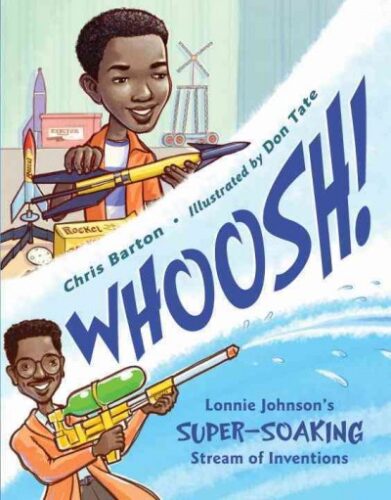
Whose Eye Am I? by Shelley Rotner
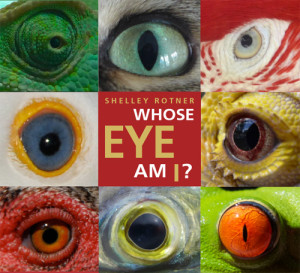
The William Hoy Story by Nancy Churnin, ill. Jez Tuya
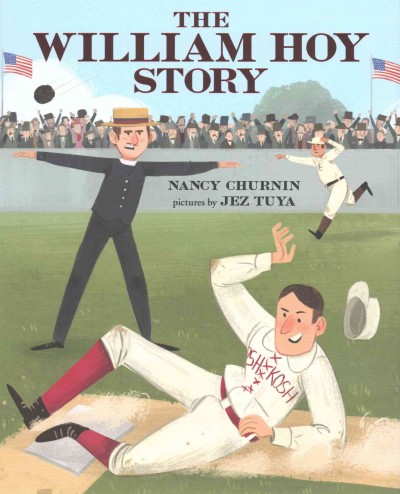
You Never Heard of Casey Stengel?! by Jonah Winter, ill. Barry Blitt
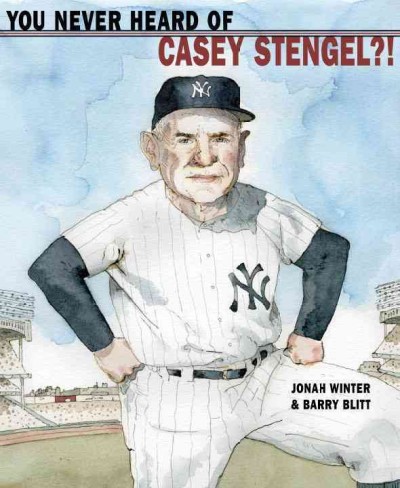
Interested in the other lists of the month? Here’s the schedule so that you can keep checking back:
December 1 – Board Books
December 2 – Board Book Adaptations
December 3 – Nursery Rhymes
December 4 – Picture Book Readalouds
December 5 – Rhyming Picture Books
December 6 – Alphabet Books
December 7 – Funny Picture Books
December 8 – Calde-Nots
December 9 – Picture Book Reprints
December 10 – Math Picture Books
December 11 – Bilingual Books
December 12 – International Imports
December 13 – Books with a Message
December 14 – Fabulous Photography
December 15 – Fairy Tales / Folktales
December 16 – Oddest Books of the Year
December 17 – Older Picture Books
December 18 – Easy Books
December 19 – Early Chapter Books
December 20 – Graphic Novels
December 21 – Poetry
December 22 – Fictionalized Nonfiction
December 23 – American History
December 24 – Science & Nature Books
December 25 – Transcendent Holiday Titles
December 26 – Unique Biographies
December 27 – Nonfiction Picture Books
December 28 – Nonfiction Chapter Books
December 29 – Novel Reprints
December 30 – Novels
December 31 – Picture Books

 There were no science books on the YALSA Award for Excellence in Nonfiction for 2016. Nor in 2015. Nor 2014. Bomb in 2013 was sort of a science book, so we’ll count that. And Moonbird that year certainly was. Yet it’s often surprising how consistently science and nature get overlooked when they’re handing out awards for nonfiction. According to my sources, science writers are complaining about this fact, and with good reason. When you create an award for nonfiction and then hand it consistently to biographies, you are, however unintentionally, sending a message.
There were no science books on the YALSA Award for Excellence in Nonfiction for 2016. Nor in 2015. Nor 2014. Bomb in 2013 was sort of a science book, so we’ll count that. And Moonbird that year certainly was. Yet it’s often surprising how consistently science and nature get overlooked when they’re handing out awards for nonfiction. According to my sources, science writers are complaining about this fact, and with good reason. When you create an award for nonfiction and then hand it consistently to biographies, you are, however unintentionally, sending a message.
On the children’s side of things the Robert F. Sibert Medal fares a bit better. In 2016 none of the books were science or nature related, but in 2015 we had Neighborhood Sharks and in 2014 Parrots Over Puerto Rico by Susan L. Roth and Cindy Trumbore actually took home the Medal itself with Look Up! Bird-Watching in Your Own Backyard by Annette LeBlanc Cate getting an Honor. You go, Sibert committees!
In their honor, I dedicate today’s list to the lovely science and nonfiction books that were published in 2016 with a hat tip to Melissa Stewart for inspiring me to do this list in the first place.
2016 Science and Nature Books for Kids
FICTION PICTURE BOOKS
Honoring those books willing to add a little science and nature in their mix. Extra points for backmatter.
Ada Twist: Scientist by Andrea Beaty
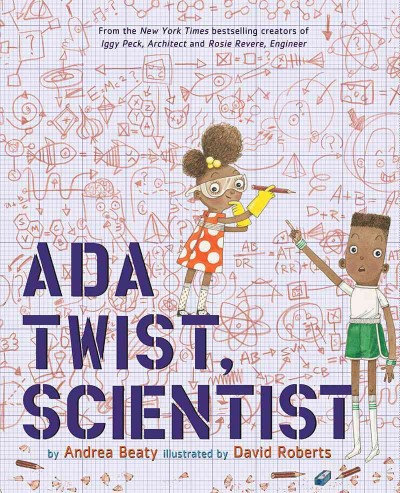
Unless I’m much mistaken, she’s still topping the New York Times bestseller list in the picture book category. I’ll give you some moments to take in the vast implications of this. Pairs particularly well with the upcoming film Hidden Figures.
Baby Loves: Aerospace Engineering!/Quarks! by Ruth Spiro, ill. Irene Chan

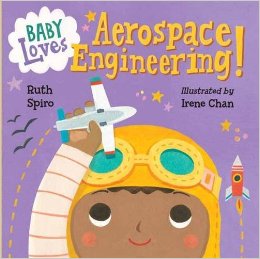
I defended this to you when I put it on the board book list, and I’d willingly do so now. Don’t just assume that due to their format these are meant solely for babies. It’s a kitchy idea that yields a lot of plum rewards. Big concepts are broken down for young people. I can get behind that.
Because of an Acorn by Lola M. Schaefer & Adam Schaefer, ill. Frann Preston-Gannon

It’s the ciiiiiiircle of liiiiiife . . . and it mooooooves us alllllllll . . .
Coyote Moon by Maria Gianferrari, ill. Bagram Ibatoulline

Apparently coyotes roam my own neighborhood’s streets in the summer. I’ve never seen them, but I’m willing to believe it. Jaw-droppingly gorgeous with a surprisingly gripping text, this is sort of like a more fictionalized version of the aforementioned Neighborhood Sharks, only this time with coyotes. In hindsight, I should have put this on the readaloud list too. GREAT readalouding.
Faraway Fox by Jolene Thompson, ill. Justin K. Thompson

The book follows a single fox blocked off from its fellows by a highway. Humans construct a tunnel under the road for wildlife and the fox is reunited with its kind. Information appears at the end about the real world tunnels, how they are constructed, and some of the challenges they fact. The art, for the record, is also a real draw here. Luscious.
Follow the Moon Home: A Tale of One Idea, Twenty Kids, and a Hundred Sea Turtles by Philippe Cousteau & Deborah Hopkinson, ill. Meilo So
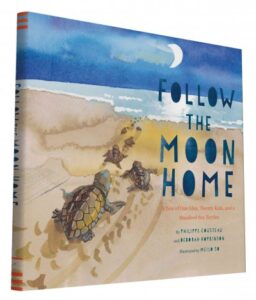
The only Meilo So book out this year? Nope, there’s one coming up later (see if you can guess what it is). Here, a girl attempts to save loggerhead sea turtle babies from man-made light, which means she has to engage in some pretty serious activism. A very cool story, and one I’ve not seen told before.
From Wolf to Woof!: The Story of Dogs by Hudson Talbott

This pairs particularly well with . . .
Grandmother Fish: A Child’s First Book of Evolution by Jonathan Tweet, ill. Karen Lewis

. . . this book. Both cover evolution to a certain extent. This scrappy little Kickstarter title covers ground that few books have on evolution.
Mad Scientist Academy: The Weather Disaster by Matthew McElligott
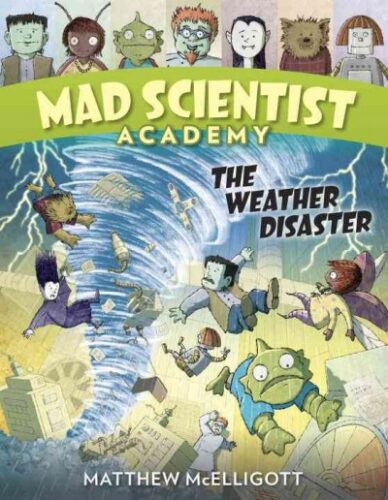
Not a lot of good weather books out this year. This one’s filling a 2016 gap.
Octopus Escapes Again by Laurie Ellen Angus

I’m oddly partial to this adorable book and the creature behind it. Always makes me think of this stranger still video, of course.
Olinguito, from A to Z! / Olinguito, de la A a la Z! by Lulu Delacre
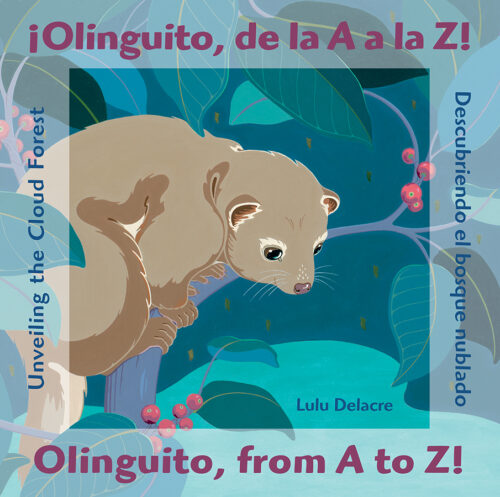
Sure, it’s an alphabet book. Sure it’s bilingual. But it’s actually a really delightful trip into the cloud forest to talk about “discovering” a new animal. Drills home to kids the fact that this is still being done today, barring the destruction of said cloud forest.
Otters Love to Play by Jonathan London, ill. Meilo So

It’s the second Meilo So title on this list today! Hooray! And otters basically just sell themselves. In writing this part of today’s list I just wasted a lot of time watching otters on YouTube for inspiration (have you seen the one of the baby sleeping on its mommy?). In any case, this lives up to its subject matter.
NONFICTION CHILDREN’S BOOKS
Animals by the Numbers: A Book of Infographics by Steve Jenkins

I just recommended this book to a colleague looking for a book to give to a 7-year-old who loves facts and figures and animals too. Couldn’t have come up with anything better! Plus, it’s where I learned that the peregrine falcons that nest on my library every year are the fastest birds in the world.
A Beetle Is Shy by Dianna Hutts Aston, ill. Sylvia Long

This is a long-standing series but it doesn’t appear to be slowing down in any way, shape, or form. Distinctly fabulous.
The Deadliest Creature in the World by Brena Z. Guiberson, ill. Gennady Spirin

I’m a sucker for a Guiberson/Spirin combo any day of the week. Actually, I’m a sucker for Spirin, period, but his work with Guiberson over the years has never produced a melon. Plus, how do you top that title? Answer: You don’t.
Deep Roots: How Trees Sustain Our Planet by Nikki Tate

I was blown away with this book. Seriously floored. You go into it thinking it’s just another gee-aren’t-trees-great title and what you get instead is this enormously in-depth, serious consideration of how they contribute to the earth. We’ve all heard the statistics on how much oxygen in the atmosphere they produce, but this was the first children’s book I’ve ever read that attempted to explain precisely how their root system works. I’d listened to a RadioLab episode (From Tree to Shining Tree) that explained this and I’m still shocked by the implications. Well done Ms. Tate for filling this book with such pertinent, incredibly up-to-date information!
Dining With Dinosaurs: A Tasty Guide to Mesozoic Munching by Hannah Bonner
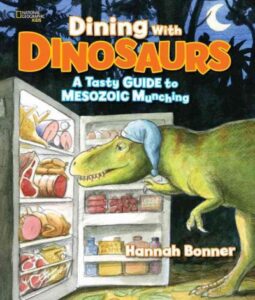
I’m not just sticking this on here because I need a dino title. Trust me, my library shelves are good in that area. But this took a distinctly deep and delightful look at a topic I would have told you had already been covered. Turns out, not so much. A must-add.
Does a Fiddler Crab Fiddle? by Corinne Demas & Artemis Roehrig, ill. John Sandford

I honestly thought the book was just going to start with fiddler crab and then move on to other animals with evocative names. Nope. Demas and Roehrig are in it for the long haul. The long fiddler crab haul. Good on them!
Feathered Dinosaurs by Brenda Z. Guiberson, ill. William Low
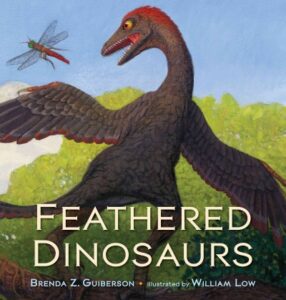
Because you can’t have enough dinosaurs. Or enough Guiberson, for that matter.
Flying Frogs and Walking Fish: Leaping Lemurs, Tumbling Toads, Jet-Propelled Jellyfish, and More Surprising Ways That Animals Move by Steve Jenkins and Robin Page
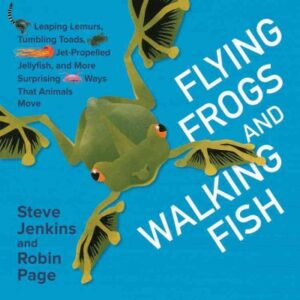
I’d cut that title way way down, but that’s the only thing I’d cut from this highly engaging title (plus it’s always great to see Jenkins and Page working together again).
How Much Does a Ladybug Weigh? by Alison Limentani

I put this on the math list not too long ago, but it’s also a really interesting, very young, science title. When you consider how much each animal weighs, you find yourself having your assumptions consistently challenged. Math and science = best buds.
I Am NOT a Dinosaur by Will Lach, ill. Jonny Lambert

My college, for whatever reason, owned the skeleton of a giant sloth. I remember seeing it for the first time on display, just utterly baffled by what I was looking at. Sloths were giants once? If you’ve a kid, hand them this book and they’ll be able to know this information far sooner than my sad college-aged self.
If You Are a Kaka, You Eat Doo Doo: And Other Poop Tales from Nature by Sara Martel, ill. Sara Lynn Cramb
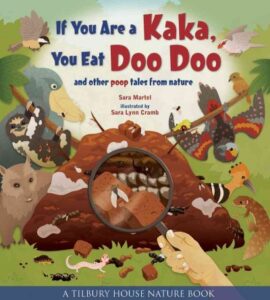
That title’s gonna turn off a bunch of folks right from the start. Maybe that’s not the worst thing, since it really is a book entirely about poop. That said, it’s not gross about it. I mean, there are gross things in it (one word: smearing) but they’re presented in a very matter-of-fact way. If you buy only one poop book this year . . .
My Book of Birds by Geraldo Valerio

Shockingly lovely from start to finish. A science picture book coffee table book, if you take my meaning.
Natumi Takes the Lead: The True Story of an Orphan Elephant Who Finds Family by Gerry Ellis with Amy Novesky
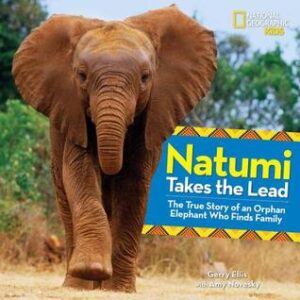
Such a good story, and a good readaloud too. I’d normally avoid any book that traipses this close to anthropomorphism but Gerry and Amy are very careful to place everything in terms true to a baby elephant. Could actually work as a graduation gift picture book as well, come to think of it.
Pink Is for Blobfish: Discovering the World’s Perfectly Pink Animals by Jess Keating, ill. David DeGrand

Not solely about the blobfish, alas, but still worth your time thanks to the sheer number of facts packed into these pages.
Plants Can’t Sit Still by Rebecca E. Hirsch, ill. Mia Posada

A cute premise. Shows all the different ways that plants get up and go go go!
The Polar Bear by Jenni Desmond

Though it’s not sourced properly (no backmatter to speak of) this is still a truly gorgeous book. It’s the kind of title you can use to either sate the polar bear needs of a true fans, or lure other readers into adoring.
Prairie Dog Song: The Key to Saving North America’s Grasslands by Susan L. Roth and Cindy Trumbore

The prairie, its life, its history, and its possible future are all discussed in this beautifully rendered little book.
The Toad by Elise Gravel

I’m a big fan of all the Gravel series titles. Of the titles out this year, the toad stole my heart. Maybe because I used to catch them in my backyard as a kid. Maybe just because this book’s the funniest.
The Tragic Tale of the Great Auk by Jan Thornhill

I’m a little ashamed to admit that I had no idea what a Great Auk even was before I read this book. Or, for that matter, that they were gone. Sometimes it feels like the passenger pigeon and the dodo get all the press. Poor auks.
Under Earth / Under Water by Aleksandra Mizielinska and Daniel Mizielinski
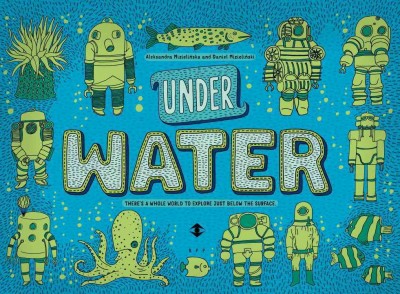
Leave it to the Polish to do something this cool. My kids just dive into this book (no pun intended) since there are so many tiny elements to adore. Again, no backmatter to speak of (European nonfiction titles have that in common) but still awesome. And huge!
What Milly Did: The Remarkable Pioneer of Plastics Recycling by Elise Moser, ill. Scot Ritchie
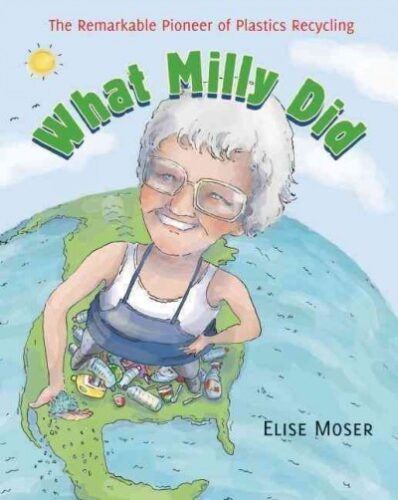
Ever stop to consider the fact that recycling plastics is a relatively new idea? How did it get officially started by vast numbers of cities around the country? A little old woman figured it all out. I love unexpected heroines.
Whoosh! Lonnie Johnson’s Super-Soaking Stream of Inventions by Chris Barton, ill. Don Tate

I’m keen on unexpected heroes too. This book is great because it shows that you don’t have to come up with polio vaccine to be considered an inventor. Plus this guy (A) made something cool and (B) is still alive! Once in a while you get a kid in your library who has to check out a bio on someone still alive. Now you’ve an ace in your back pocket.
Whose Eye Am I? by Shelley Rotner

Look them in the eye and tell them you’re not interested in this book. Go on. Tell them.
Interested in the other lists of the month? Here’s the schedule so that you can keep checking back:
December 1 – Board Books
December 2 – Board Book Adaptations
December 3 – Nursery Rhymes
December 4 – Picture Book Readalouds
December 5 – Rhyming Picture Books
December 6 – Alphabet Books
December 7 – Funny Picture Books
December 8 – Calde-Nots
December 9 – Picture Book Reprints
December 10 – Math Picture Books
December 11 – Bilingual Books
December 12 – International Imports
December 13 – Books with a Message
December 14 – Fabulous Photography
December 15 – Fairy Tales / Folktales
December 16 – Oddest Books of the Year
December 17 – Older Picture Books
December 18 – Easy Books
December 19 – Early Chapter Books
December 20 – Graphic Novels
December 21 – Poetry
December 22 – Fictionalized Nonfiction
December 23 – American History
December 24 – Science & Nature Books
December 25 – Transcendent Holiday Titles
December 26 – Unique Biographies
December 27 – Nonfiction Picture Books
December 28 – Nonfiction Chapter Books
December 29 – Novel Reprints
December 30 – Novels
December 31 – Picture Books


By:
Betsy Bird,
on 10/27/2016
Blog:
A Fuse #8 Production
(
Login to Add to MyJacketFlap)
JacketFlap tags:
Reviews,
nonfiction picture books,
Feiwel and Friends,
macmillan,
2016 reviews,
Reviews 2016,
2016 nonfiction picture books,
Jonathan Tweet,
Karen Lewis,
Add a tag
 Grandmother Fish: A Child’s First Book of Evolution
Grandmother Fish: A Child’s First Book of Evolution
By Jonathan Tweet
Illustrated by Karen Lewis
Feiwel and Friends (an imprint of Macmillan)
$17.99
ISBN: 978-1250113238
Ages 3-6
On shelves now
Travel back with me through the Earth’s history, back into the farthest reaches of time when the sand we walk today was still rock and the oceans of an entirely salination. Back back back we go to, oh about 13 years ago, I’d say. I was a library grad student, and had just come to the shocking realization that the children’s literature class I’d taken on a lark might actually yield a career of some sort. We were learning the finer points of book reviewing (hat tip to K.T. Horning’s From Cover to Cover there) and to hone our skills each of us was handed a brand new children’s book, ready for review. I was handed Our Family Tree: An Evolution Story by Lisa Westberg Peters, illustrated by Lauren Stringer. It was good, so I came up with some kind of a review. It was, now that I think about it, the very first children’s book review I ever wrote (talk about evolution). And I remember at the time thinking (A) How great it was to read a picture book on the topic and (B) That with my limited knowledge of the field there were probably loads and loads of books out there about evolution for small children. Fun Fact: There aren’t. Actually, in the thirteen years between then and now I’ve not seen a single evolution themed picture book come out since the Peters/Stringer collaboration. Until now. Because apparently two years before I ran across Our Family Tree author Jonathan Tweet was trying to figure out why there were so few books on the subject on the market. It took him a while, but he finally got his thoughts in order and wrote this book. Worth the wait and possibly the only book we may need on the subject. For a while, anyway.
Let’s start with a fish. We’ll call her Grandmother Fish and she lived “a long, long, long, long, long time ago.” She did familiar fishy things like “wiggle” and “chomp”. And then she had ancestors and they turned out to be everything from sharks to ray-finned fish to reptiles. That’s when you meet Grandmother Reptile, who lived “a long, long, long, long time ago.” From reptiles we get to mammals. From mammals to apes. And from apes to humans. And with each successive iteration, they carry with them the traits of their previous forms. Remember how Grandmother Fish could wiggle and chomp? Well, so can every subsequent ancestor, with some additional features as well. The final image in the book shows a wide range of humans and they can do the things mentioned in the book before. Backmatter includes a more complex evolutionary family tree, a note on how to use this book, a portion “Explaining Concepts of Evolution”, a guide “to the Grandmothers, Their Actions, and Their Grandchildren for your own information to help you explain evolution to your child”, and finally a portion on “Correcting Common Errors” (useful for both adults and kids).
 What are the forbidden topics of children’s literature? Which is to say, what are the topics that could be rendered appropriate for kids but for one reason or another never see the light of day? I can think of a couple off the top of my head, an evolution might be one of them. To say that it’s controversial in this, the 21st century, is a bit odd, but we live in odd times. No doubt the book’s creators have already received their own fair share of hate mail from folks who believe this content is inappropriate for their children. I wouldn’t be too surprised to hear that it ended up on ALA’s Most Challenged list of books in the future. Yet, as I mentioned before, finding ANY book on this subject, particularly on the young end of the scale, is near impossible. I am pleased that this book is filling such a huge gap in our library collections. Now if someone would just do something for the 7-12 year olds . . .
What are the forbidden topics of children’s literature? Which is to say, what are the topics that could be rendered appropriate for kids but for one reason or another never see the light of day? I can think of a couple off the top of my head, an evolution might be one of them. To say that it’s controversial in this, the 21st century, is a bit odd, but we live in odd times. No doubt the book’s creators have already received their own fair share of hate mail from folks who believe this content is inappropriate for their children. I wouldn’t be too surprised to hear that it ended up on ALA’s Most Challenged list of books in the future. Yet, as I mentioned before, finding ANY book on this subject, particularly on the young end of the scale, is near impossible. I am pleased that this book is filling such a huge gap in our library collections. Now if someone would just do something for the 7-12 year olds . . .
When you are simplifying a topic for children, one of the first things you need to figure out from the get-go is how young you want to go. Are you aiming your book at savvy 6-year-olds or bright-eyed and bushy-tailed 3-year-olds? In the case of Grandmother Fish the back-story to the book is that creator Jonathan Tweet was inspired to write it when he couldn’t find a book for his daughter on evolution. We will have to assume that his daughter was on the young end of things since the final product is very clearly geared towards the interactive picture book crowd. Readers are encouraged to wiggle, crawl, breathe, etc. and the words proved capable of interesting both my 2-year-old son and my 5-year-old daughter. One would not know from this book that the author hadn’t penned picture books for kids before. The gentle repetition and clincher of a conclusion suggest otherwise.
One problem with turning evolution into picture book fare is the danger of confusing the kids (of any age, really). If you play it that our ancestors were monkeys, then some folks might take you seriously. That’s where the branching of the tree becomes so interesting. Tweet and Lewis try hard to make it clear that though we might call a critter “grandmother” it’s not literally that kind of a thing. The problem is that because the text is so simple, it really does say that each creature had “many kinds of grandchildren.” Explaining to kids that this is a metaphor and not literal . . . well, good luck with that. You may find yourself leaning heavily on the “Correcting Common Errors” page at the end of the book, which aims to correct common misconceptions. There you will find gentle corrections to false statements like “We started as fish” or “Evolution progresses to the human form” or “We descended from one fish or pair of fish, or one early human or pair of early humans.” Of these Common Errors, my favorite was “Evolution only adds traits” since it was followed by the intriguing corrective, “Evolution also take traits away. Whales can’t crawl even though they’re descended from mammals that could.” Let’s talk about the bone structure of the dolphin’s flipper sometime, shall we? The accompanying “Explaining Concepts of Evolution” does a nice job of helping adults break down ideas like “Natural Selection” and “Artificial Selection” and “Descent with Modification” into concepts for young kids. Backmatter-wise, I’d give the book an A+. In terms of the story itself, however, I’m going with a B. After all, it’s not like every parent and educator that reads this book to kids is even going to get to the backmatter. I understand the decisions that led them to say that each “Grandmother” had “grandchildren” but surely there was another way of phrasing it.
 This isn’t the first crowd-sourced picture book I’ve ever seen, but it may be one of the most successful. The reason is partly because of the subject matter, partly because of the writing, and mostly because of the art. Bad art sinks even the most well-intentioned of picture books out there. Now I don’t know the back-story behind why Tweet paired with illustrator Karen Lewis on this book, but I hope he counts his lucky stars every day for her participation. First and foremost, he got an illustrator who had done books for children before (Arturo and the Navidad Birds probably being her best known). Second, her combination of watercolors and digital art really causes the pages to pop. The colors in particular are remarkably vibrant. It’s a pleasure to watch them, whether close up for one-on-one readings, or from a distance for groups. Whether on her own or with Tweet’s collaboration, her clear depictions of the evolutionary “tree” is nice and fun. Plus, it’s nice to see some early humans who aren’t your stereotypical white cavemen with clubs, for once.
This isn’t the first crowd-sourced picture book I’ve ever seen, but it may be one of the most successful. The reason is partly because of the subject matter, partly because of the writing, and mostly because of the art. Bad art sinks even the most well-intentioned of picture books out there. Now I don’t know the back-story behind why Tweet paired with illustrator Karen Lewis on this book, but I hope he counts his lucky stars every day for her participation. First and foremost, he got an illustrator who had done books for children before (Arturo and the Navidad Birds probably being her best known). Second, her combination of watercolors and digital art really causes the pages to pop. The colors in particular are remarkably vibrant. It’s a pleasure to watch them, whether close up for one-on-one readings, or from a distance for groups. Whether on her own or with Tweet’s collaboration, her clear depictions of the evolutionary “tree” is nice and fun. Plus, it’s nice to see some early humans who aren’t your stereotypical white cavemen with clubs, for once.
I look at this book and I wonder what its future holds. Will a fair number of public school libraries purchase it? They should. Will parents like Mr. Tweet be able to find it when they wander aimlessly into bookstores and libraries? One can hope. And is it any good? It is. But you only have my word on that one. Still, if great grand numbers of perfect strangers can band together to bring a book to life on a topic crying out for representation on our children’s shelves, you’ve gotta figure the author and illustrator are doing something right. A book that meets and then exceeds expectations, tackling a tricky subject, in a divisive era of our history, to the betterment of all. Not too shabby for a fish.
On shelves now.
Source: Final copy sent from publisher for review.
Like This? Then Try:


By:
Betsy Bird,
on 7/27/2016
Blog:
A Fuse #8 Production
(
Login to Add to MyJacketFlap)
JacketFlap tags:
Reviews,
nonfiction picture books,
Best Books,
picture book biographies,
Little Brown and Company,
African-American history,
Javaka Steptoe,
African-American biographies,
African-American picture book biographies,
African-American authors and illustrators,
2016 Caldecott contenders,
Best Books of 2016,
Reviews 2016,
2016 nonfiction picture books,
2016 picture book biographies,
Add a tag
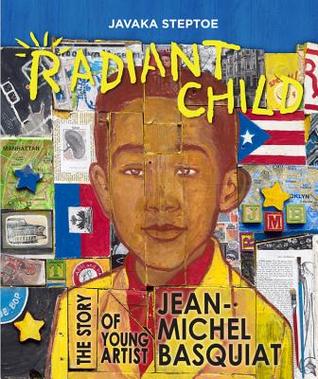 Radiant Child: The Story of Young Artist Jean-Michel Basquiat
Radiant Child: The Story of Young Artist Jean-Michel Basquiat
By Javaka Steptoe
Little, Brown & Co.
$17.99
ISBN: 978-0-316-21388-2
Ages 5 and up
On shelves October 25th
True Story: I’m working the children’s reference desk of the Children’s Room at 42nd Street of New York Public Library a couple years ago and a family walks in. They go off to read some books and eventually the younger son, I’d say around four years of age, approaches my desk. He walks right up to me, looks me dead in the eye, and says, “I want all your Javaka Steptoe books.” Essentially this child was a living embodiment of my greatest dream for mankind. I wish every single kid in America followed that little boy’s lead. Walk up to your nearest children’s librarian and insist on a full fledged heaping helping of Javaka. Why? Well aside from the fact that he’s essentially children’s book royalty (his father was the groundbreaking African-American picture book author/illustrator John Steptoe) he’s one of the most impressive / too-little-known artists working today. But that little boy knew him and if his latest picture book biography “Radiant Child: The Story of Young Artist Jean-Michel Basquiat” is even half as good as I think it is, a whole host of children will follow suit. But don’t take my word for it. Take that four-year-old boy’s. That kid knew something good when he saw it.
“Somewhere in Brooklyn, a little boy dreams of being a famous artist, not knowing that one day he will make himself a KING.” That boy is an artist already, though not famous yet. In his house he colors on anything and everything within reach. And the art he makes isn’t pretty. It’s, “sloppy, ugly, and sometimes weird, but somehow still BEAUTIFUL.” His mother encourages him, teaches him, and gives him an appreciation for all the art in the world. When he’s in a car accident, she’s the one who hands him Gray’s Anatomy to help him cope with what he doesn’t understand. Still, nothing can help him readily understand his own mother’s mental illness, particularly when she’s taken away to live where she can get help. All the same, that boy, Jean-Michel Basquiat, shows her his art, and with determination he grows up, moves to Manhattan, and starts his meteoric rise in the art scene. All this so that when, at long last, he’s at the top of his game, it’s his mother who sits on the throne at his art shows. Additional information about Basquiat appears at the back of the book alongside a key to the motifs in his work, an additional note from Steptoe himself on what Basquiat’s life and work can mean to young readers, and a Bibliography.
 Javaka Steptoe apparently doesn’t like to make things easy for himself. If he wanted to, he could illustrate all the usual African-American subjects we see in books every year. Your Martin Luther Kings and Rosa Parks and George Washington Carvers. So what projects does he choose instead? Complicated heroes who led complicated lives. Artists. Jimi Hendrix and guys like that. Because for all that kids should, no, MUST know who Basquiat was, he was an adult with problems. When Steptoe illustrated Gary Golio’s bio of Hendrix (Jimi: Sounds Like a Rainbow) critics were universal in their praise. And like that book, Steptoe ends his story at the height of Basquiat’s fame. I’ve seen some folks comment that the ending here is “abrupt” and that’s not wrong. But it’s also a natural high, and a real time in the man’s life when he was really and truly happy. When presenting a subject like Basquiat to a young audience you zero in on the good, acknowledge the bad in some way (even if it’s afterwards in an Author’s Note), and do what you can to establish precisely why this person should be mentioned alongside those Martin Luther Kings, Rosa Parks, and George Washington Carvers.
Javaka Steptoe apparently doesn’t like to make things easy for himself. If he wanted to, he could illustrate all the usual African-American subjects we see in books every year. Your Martin Luther Kings and Rosa Parks and George Washington Carvers. So what projects does he choose instead? Complicated heroes who led complicated lives. Artists. Jimi Hendrix and guys like that. Because for all that kids should, no, MUST know who Basquiat was, he was an adult with problems. When Steptoe illustrated Gary Golio’s bio of Hendrix (Jimi: Sounds Like a Rainbow) critics were universal in their praise. And like that book, Steptoe ends his story at the height of Basquiat’s fame. I’ve seen some folks comment that the ending here is “abrupt” and that’s not wrong. But it’s also a natural high, and a real time in the man’s life when he was really and truly happy. When presenting a subject like Basquiat to a young audience you zero in on the good, acknowledge the bad in some way (even if it’s afterwards in an Author’s Note), and do what you can to establish precisely why this person should be mentioned alongside those Martin Luther Kings, Rosa Parks, and George Washington Carvers.
There’s this moment in the film Basquiat when David Bowie (playing Andy Warhol) looks at some of his own art and says off-handedly, “I just don’t know what’s good anymore.” I have days, looking at the art of picture books when I feel the same way. Happily, there wasn’t a minute, not a second, when I felt that way about Radiant Child. Now I’m going to let you in on a little secret: Do you know what one of the most difficult occupations to illustrate a picture book biography about is? Artist. Because right from the start the illustrator of the book is in a pickle. Are you going to try to replicate the art of this long dead artist? Are you going to grossly insert it into your own images, even if the book isn’t mixed media to begin with? Are you going to try to illustrate the story in that artist’s style alone, relegating images of their actual art to the backmatter? Steptoe addresses all this in his Note at the back of the book. As he says, “Instead of reproducing or including copies of real Basquiat paintings in this book, I chose to create my own interpretations of certain pieces and motifs.” To do this he raided Basquiat’s old haunts around NYC for discarded pieces of wood to paint on. The last time I saw this degree of attention paid to painting on wood in a children’s book was Paul O. Zelinsky’s work on Swamp Angel. In Steptoe’s case, his illustration choice works shockingly well. Look how he manages to give the reader a sense of perspective when he presents Picasso’s “Guernica” at an angle, rather than straight on. Look how the different pieces of wood, brought together, fit, sometimes including characters on the same piece to show their closeness, and sometimes painting them on separate pieces as a family is broken apart. And the remarkable thing is that for all that it’s technically “mixed-media”, after the initial jolt of the art found on the title page (a full wordless image of Basquiat as an adult surrounded by some of his own imagery) you’re all in. You might not even notice that even the borders surrounding these pictures are found wood as well.
 The precise age when a child starts to feel that their art is “not good” anymore because it doesn’t look realistic or professional enough is relative. Generally it happens around nine or ten. A book like Radiant Child, however, is aimed at younger kids in the 6-9 year old range. This is good news. For one thing, looking at young Basquiat vs. older Basquiat, it’s possible to see how his art is both childlike and sophisticated all at once. A kid could look at what he’s doing in this book and think, “I could do that!” And in his text, Steptoe drills into the reader the fact that even a kid can be a serious artist. As he says, “In his house you can tell a serious ARTIST dwells.” No bones about it.
The precise age when a child starts to feel that their art is “not good” anymore because it doesn’t look realistic or professional enough is relative. Generally it happens around nine or ten. A book like Radiant Child, however, is aimed at younger kids in the 6-9 year old range. This is good news. For one thing, looking at young Basquiat vs. older Basquiat, it’s possible to see how his art is both childlike and sophisticated all at once. A kid could look at what he’s doing in this book and think, “I could do that!” And in his text, Steptoe drills into the reader the fact that even a kid can be a serious artist. As he says, “In his house you can tell a serious ARTIST dwells.” No bones about it.
How much can a single picture book bio do? Pick a good one apart and you’ll see all the different levels at work. Steptoe isn’t just interested in celebrating Basquiat the artist or encouraging kids to keep working on their art. He also notes at the back of the book that the story of Basquiat’s relationship with his mother, who suffered from mental illness, was very personal to him. And so, Basquiat’s mother remains an influence and an important part of his life throughout the text. You might worry, and with good reason, that the topic of mental illness is too large for a biography about someone else, particularly when that problem is not the focus of the book. How do you properly address such an adult problem (one that kids everywhere have to deal with all the time) while taking care to not draw too much attention away from the book’s real subject? Can that even be done? Sacrifices, one way or another, have to be made. In Radiant Child Steptoe’s solution is to show Jean-Michel within the lens of his art’s relationship to his mother. She talks to him about art, takes him to museums, and encourages him to keep creating. When he sees “Guernica”, it’s while he’s holding her hand. And because Steptoe has taken care to link art + mom, her absence is keenly felt when she’s gone. The book’s borders go a dull brown. Just that single line “His mother’s mind is not well” says it succinctly. Jean-Michel is confused. The kids reading the book might be confused. But the feeling of having a parent you are close to leave you . . . we can all relate to that, regardless of the reason. It’s just going to have a little more poignancy for those kids that have a familiarity with family members that suffer mental illnesses. Says Steptoe, maybe with this book those kids can, “use Basquiat’s story as a catalyst for conversation and healing.”
That’s a lot for a single picture book biography to take on. Yet I truly believe that Radiant Child is up to the task. It’s telling that in the years since I became a children’s librarian I’ve seen a number of Andy Warhol biographies and picture books for kids but the closest thing I ever saw to a Basquiat bio for children was Life Doesn’t Frighten Me as penned by Maya Angelou, illustrated by Jean-Michel. And that wasn’t even really a biography! For a household name, that’s a pretty shabby showing. But maybe it makes sense that only Steptoe could have brought him to proper life and to the attention of a young readership. In such a case as this, it takes an artist to display another artist. Had Basquiat chosen to create his own picture book autobiography, I don’t think he could have done a better job that what Radiant Child has accomplished here. Timely. Telling. Overdue.
On shelves October 25th.
Source: F&G sent from publisher for review.
Professional Reviews: A star from Kirkus


By:
Betsy Bird,
on 2/25/2016
Blog:
A Fuse #8 Production
(
Login to Add to MyJacketFlap)
JacketFlap tags:
Reviews,
Lee & Low Books,
nonfiction picture books,
Best Books,
alphabet books,
Lulu Delacre,
Best Books of 2016,
2016 reviews,
Reviews 2016,
2016 nonfiction picture books,
Add a tag
 ¡Olinguito, de la A a la Z! / Olinguito, from A to Z
¡Olinguito, de la A a la Z! / Olinguito, from A to Z
By Lulu Delacre
Children’s Book Press, an imprint of Lee & Low Books
$18.95
ISBN: 978-0-89239-327-5
Ages 4-7
On shelves now
Adults, I have a little secret. Have you ever wanted to sound smart at dinner parties? Knowledgeable in the ways of the world and how it works? It’s easy to do if you know the secret. Come closer… I’ll whisper it to you. Read nonfiction children’s books. Seriously, do that and watch as your brain expands. If I can talk with any competency about the Donner Party or the siege of Leningrad or the Pentagon Papers, it is because I read nonfiction written for people half my age and younger. Most recently I learned about olinguitos. Ever heard of them? If not, you aren’t alone. These shy little rainforest denizens were only discovered and announced as recently as 2013. Not too much is known about them, which makes placing them into picture books a bit of a challenge. Author/illustrator Lulu Delacre had a plan, though. All she’d need to do would be to turn the story of the discovery of olinguitos into a bilingual/alphabet/nonfiction/search & find title. You see? Easy peasy. Or, put another way, so incredibly difficult that no one else would have ever attempted it. But that’s what I like about Ms. Delacre. Sometimes the craziest ideas churn out the most interesting books.
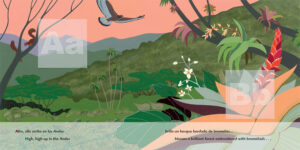 A zoologist from Washington D.C. is in the cloud forest today. He is searching for the elusive olinguito, a squirrel-like mammal that dwells in the trees. Along his path we meet the rainforest in an abecedarian fashion. From the A for the Andes to the M of moss and monkey, finally ending with Z for the zoologist himself, the book observes the many denizens that call the cloud forest their home. The book is entirely bilingual and backmatter (also bilingual) consists of notes on the “Discovery of the Olinguito”, facts about the Cloud Forest, information about the illustrations, hints on how to be an explorer, a heavily illustrated Glossary, “More Helpful Words”, and an extensive list of Author’s Sources.
A zoologist from Washington D.C. is in the cloud forest today. He is searching for the elusive olinguito, a squirrel-like mammal that dwells in the trees. Along his path we meet the rainforest in an abecedarian fashion. From the A for the Andes to the M of moss and monkey, finally ending with Z for the zoologist himself, the book observes the many denizens that call the cloud forest their home. The book is entirely bilingual and backmatter (also bilingual) consists of notes on the “Discovery of the Olinguito”, facts about the Cloud Forest, information about the illustrations, hints on how to be an explorer, a heavily illustrated Glossary, “More Helpful Words”, and an extensive list of Author’s Sources.
I’ve read plenty of Spanish bilingual picture books in my day. In doing so, I’m a bit handicapped since I don’t speak the language. Still, there are things that I can observe from my end. For example, the difficulty Ms. Delacre must have faced in writing two texts, both of which had to contain specific letters of the alphabet. Now the primary language in this book, to a certain extent, is the Spanish. For each letter the Spanish sections get a lot more use than the English. Take the letter “J”. In the Spanish language section it reads, “Jigua jaguey y jazmin brotan, crecen en tal jardin.” Pretty straightforward. Now in the English: “Jigua, fig, and coffee trees sprout and grow in this garden.” Were it not for the “jingua” we’d be out a J. To be fair, sometimes the two languages get equal use of a letter. “I”, for example, is “insectos incredibles y una inerte iguana” and also “incredible insects, and a resting iguana.” However, more often than not the Spanish gets more words with the chosen letter. This is particularly true near the end of the book where the English translations at times completely do away with the letter at all. In “X” and “U” (surprisingly) not a single word in the English portions begin with those letters. What is clear is that the Spanish is the focus of the book. With that in mind, the book acquires another potential use; excellent reading for people learning Spanish.
 It’s been a long time since I reviewed a Lulu Delacre book. I think the last time I seriously considered one was when Ms. Delacre illustrated Lucia Gonzalez’s The Storyteller’s Candle. There, the book integrated newspapers and other mixed media to tell the tale of two children introducing their immigrant neighborhood to the library. Here, the art is also mixed media but there’s a smoothness to it that was lacking in Storyteller’s Candle. In the back of the book Ms. Delacre mentions that there are real pressed leaves and flowers in every picture (something I entirely missed on my first, second, and third reads). There is also a zoologist in every picture, like a fuzzy little olinguito-seeking Waldo. Add in the colors, angles, and gorgeous spreads and you’ve got yourself one heck of a colorful outing. Ms. Delacre even mentions in her note at the book’s end that, just to be honest, these pictures are entirely too clear. “I decided to remove the clouds and limit the vegetation. I represented the fog and mist with squares of translucent paper framing the alphabetic letters. This allowed the species to be in plain sight.” Not only is she honest but creative as well.
It’s been a long time since I reviewed a Lulu Delacre book. I think the last time I seriously considered one was when Ms. Delacre illustrated Lucia Gonzalez’s The Storyteller’s Candle. There, the book integrated newspapers and other mixed media to tell the tale of two children introducing their immigrant neighborhood to the library. Here, the art is also mixed media but there’s a smoothness to it that was lacking in Storyteller’s Candle. In the back of the book Ms. Delacre mentions that there are real pressed leaves and flowers in every picture (something I entirely missed on my first, second, and third reads). There is also a zoologist in every picture, like a fuzzy little olinguito-seeking Waldo. Add in the colors, angles, and gorgeous spreads and you’ve got yourself one heck of a colorful outing. Ms. Delacre even mentions in her note at the book’s end that, just to be honest, these pictures are entirely too clear. “I decided to remove the clouds and limit the vegetation. I represented the fog and mist with squares of translucent paper framing the alphabetic letters. This allowed the species to be in plain sight.” Not only is she honest but creative as well.
I’ll level with you that I’m not entirely certain how one goes about using this book with kids. That is not to say that I don’t think it can be done and done well. But what Ms. Delacre has conjured up here isn’t a simple book. It’s not simplistic. The English text lacks much of the fun alliteration of the Spanish, which means the teacher or parent who reads this with their non-Spanish speaking children will need to span that gap themselves. It’s not a readaloud in the sense that you can just read it to a group without comment. This is an interactive text. You need to be spotting the zoologist, naming the vegetation and animals, flipping back and forth between the pictures and the glossary for clarification on different names, etc. In other words, this book requires the adult reader to be an active rather than passive participant in the reading process. Olinguito is more than mere words on a page.
There’s a soft spot in my heart for any book that proves to kids that there is more out there to find and discover than they might expect. The oceans haven’t been mapped out. Outer space remains, in many ways, a mystery. And hidden in the rainforests are tiny creatures just waiting to be discovered. Our world still needs explorers. If it takes one tiny mammal to prove that to them, so be it. A clever, lovely, wise little book. Knowledge of Spanish helpful, but not required.
On shelves now.
Like This? Then Try:
Professional Reviews:





















































































[…] also made Betsy Bird’s Fuse 8 list for best nonfiction of 2016 and can be seen HERE. It was great to see my illustrator friends Fiona Robinson, James Gulliver […]